How Military Historians Are Using Quantitative Analysis — And You Can Too
 On 1
November 1995, the leaders of three parts of the former Republic of
Yugoslavia met in Dayton, Ohio to hammer out an accord that would
bring peace to the warring factions of the former Yugoslavia. That
same day, The Dupuy Institute was asked by the Joint Chiefs of
Staff to apply its historical expertise on combat casualties to the
estimation of fatalities that U.S. forces might experience in a
projected twelve-month intervention in Bosnia. The United States was
contemplating inserting a peacekeeping force between the warring
parties after the Dayton Accords were signed. What would be the
likely costs of such an intervention? Would it become another
Vietnam? These are the type of questions that leaders wanted answered
before they put our soldiers in harms way.
On 1
November 1995, the leaders of three parts of the former Republic of
Yugoslavia met in Dayton, Ohio to hammer out an accord that would
bring peace to the warring factions of the former Yugoslavia. That
same day, The Dupuy Institute was asked by the Joint Chiefs of
Staff to apply its historical expertise on combat casualties to the
estimation of fatalities that U.S. forces might experience in a
projected twelve-month intervention in Bosnia. The United States was
contemplating inserting a peacekeeping force between the warring
parties after the Dayton Accords were signed. What would be the
likely costs of such an intervention? Would it become another
Vietnam? These are the type of questions that leaders wanted answered
before they put our soldiers in harms way.
But, there were answers available. Since World War II, there had been dozens peacekeeping operations in the world. There were a large number of historical comparisons that could be made and some produced casualties, some did not, and few produced a lot of peacekeeping casualties. Was it possible to produce an estimate for our defense planners?
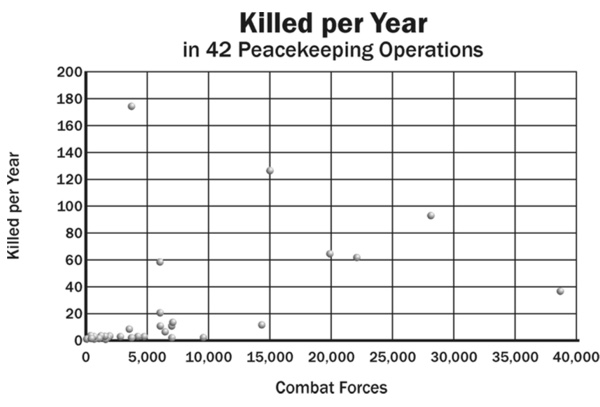
This would be quantitative analysis of history, or more specifically, quantitative analysis of military history. More to the point, it was applied history, where the data from the past was being used to make decisions in the present. This estimate was used as part of the decision-making leading up to Bosnia.1

Quantitative analysis of military history is often conducted in an arena outside of the halls of academia. But if history is to have value and relevance to the real world, then it needs to be able to address real world questions, not just as an example or a case study or two, but as a body of work that can be used to establish and prove hypotheses in a scientific manner. Historical analysis is regularly practiced by economists and econometricians.
Our work at The Dupuy Institute has repeatedly made use of quantitative analysis of history. Some was for combat model validation using our Ardennes and Kursk data bases. Some was for analysis of elements of conventional combat, like our studies on enemy prisoner of war capture rates, urban combat, and the advantage of superior situational awareness. Some was for understanding and analysis of insurgencies, as with our Bosnia and Iraq casualty estimates and our subsequent theoretical work on the nature of insurgencies. This was mostly work for the Department of Defense analytical community. As such, it intersected with the work the operations research community, along with the modeling and simulation community. Some may consider us operations researchers, and we are in the sense that we actually research operations. Still it was history, but it was history for the purpose of answering a specific current question.
So what is the source of the data that we used for our analysis? First, most of the data that we needed for this analysis had not been systematically assembled before. There were no existing databases that would allow us to analyze loss rates in peacekeeping operations and small insurgencies. We had to create this database and then populate it with research from 90 different wars, contingencies and peacekeeping operations. Our study estimated that there was a 50% chance that U.S. killed from all causes in Bosnia in the first year would be below 17 (12 combat deaths and 5 non-combat fatalities) and a 90% chance U.S. killed would be below 25.2 Actual U.S. casualties from all causes in the first year in Bosnia were six and there were no combat deaths.
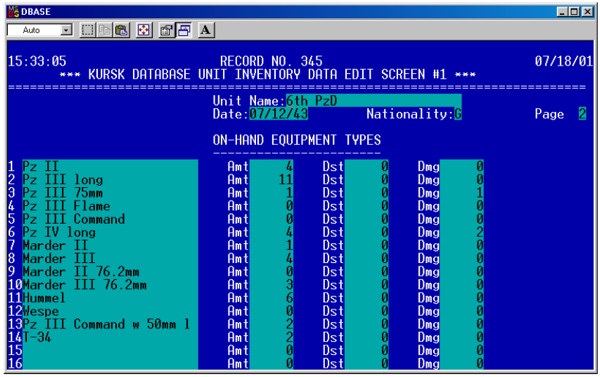
Given time and budget, we have also built large combat databases of the Second Ardennes Campaign (the Battle of the Bulge) and the Battle of Kursk. These multi-year projects involved extracting the daily records for each and every unit involved in the fighting, and then recording the statistical data drawn from them into a database we designed. This required researching through primary source records and extracting the relevant data. We logged extensive time in the U.S. National Archives, the UK Public Records Office, the German Federal Archives, and the Central Archive of the Russian Ministry of Defense. It required researchers to work in English, German and Russian, and involved extensive translations work of those records. These were large undertakings, involving teams of a dozen or more people to do the research over a couple of years. It was the type of work that academia can rarely find funding for, but the Department of Defense sometimes can. Certainly the people doing the research were doing original and unique historical research.
This data and other similar data we have collected were used for many of our other studies. This was research that was both rigorous and exhaustive, that was assembled into databases that could then be used for analysis of defense issues. Was this historical research, historical analysis or operations research? The inventor Thomas Edison claimed that genius is 1 percent inspiration, 99 percent perspiration. Our quantitative analysis of history was certainly 95 percent historical research, and probably less that 5 percent of our time was spent analyzing the data. We spent most of our time as historians, not as number crunchers.
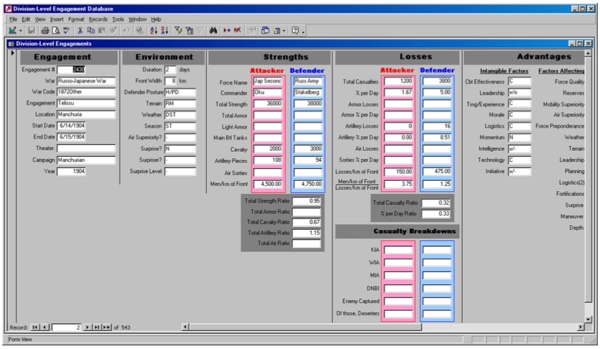
This was also true of our subsequent work on insurgencies. In 2004, we produced an estimate of casualties and duration for Iraq. We started with the old database we used for the Bosnia estimate, and then expanded it to cover in depth 28 post-WWII insurgencies we decided to use for our analysis. This became a more detailed and better researched data base. After we completed the Iraq casualty estimate (which unfortunately was accurate in its estimate of U.S. casualties and duration of the intervention), we were then contracted to expand the data base. It eventually grew to 109 cases of insurgencies, peacekeeping operations and interventions. In the Excel version of the database, there were at least a dozen sheets for each case that addressed such subjects as basic (background) data, strengths, losses, civilian casualties, incidents, and a wide range of other statistical data of these wars. At the peak of the effort, a team of ten researchers were developing the database and conducting the related analysis. This data was pulled from a wide variety of sources, many of them secondary, but sometimes primary sources. Again the research was the majority of the work. For most of that project (which lasted several years), there were three to six people working on the assembling the data while there was effectively only one person who conducted the analysis.
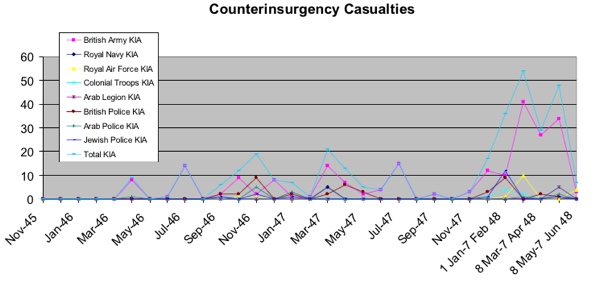
None of this research would be known outside of a small group of analysts inside the defense community without the extra-ordinary effort of assembling the work into books and getting them published. This process has only recently started. As time has allowed we have prepared a 1600-page book on the Battle of Kursk that is built upon our research. Our insurgency work is presented in a much smaller book that focuses on the theoretical and analytical work we have done, but the book does not present the data in detail. Some of our other analytical work on conventional combat is presented in a third book. The first two books are finally being published this year while we are still searching for a publisher for the third book.3 Without this publication effort, this work might remain forever out of the sight of the broader academic and research community. It was only published because our regular defense work was slow.
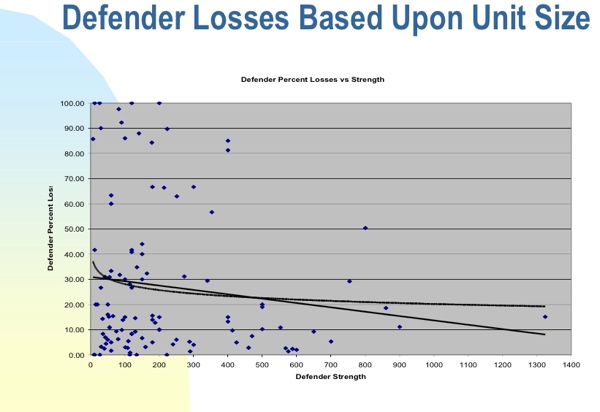
In many respects, we feel we have showed the way as to what can be done with quantitative analysis of history, in that we have produced casualty estimates and other predictions related to the wars and peacekeeping operations in Bosnia, Iraq and Afghanistan in addition to a wide range of other analytical work. Can other historical data be analyzed to address different relevant current issues? It certainly can with a little imagination and a lot of effort.
1 JCS Chairman General John Shalikashvili had the draft executive summary of the Bosnia casualty estimate with him in the meeting with President Clinton where the decision was made as to whether to commit the U.S. forces to the peace mission. This was relayed by General John Shalikashvili in private conversations with Nicholas Krawciw (MG, USA, ret), who was, at the time, president of The Dupuy Institute.
2 Peacekeeping in Bosnia Fatality Estimates (McLean, VA.: The Dupuy Institute, 1995).
3 These books are Kursk: The Battle of Prokhorovka (Aberdeen Books, Sheridan, CO. 2015), America’s Modern Wars: Understanding Iraq, Afghanistan and Vietnam (Casemate Publishers, Philadelphia & Oxford, 2015) and the unpublished War by Numbers: Understanding Conventional Combat, all by Christopher A. Lawrence.